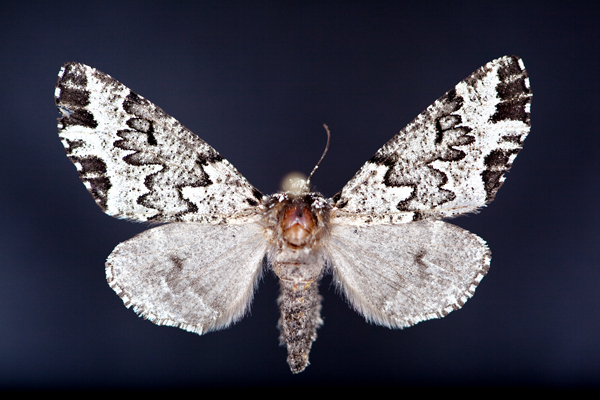Tämä Maanantain koi on mahtava laji vuorilta Arizona – Chiricahua multidentata, Geometrid. Ainoa tunnettu paikka tämä laji on hyvin alkuun Chiricahua vuorten yllä 9,000 jalat (joka oli juuri bruned rapeaksi). Toivottavasti tuli ei ollut täysin tuhoisa ja väestö elpyy tulevina vuosina. Ennen 2009 tämä koi oli tunnettu harvemmasta kuin 10 yksilöt, kaikki on vangittu hieman alemmalla korkeudella Sipuli-satulalla Chiricahuassa. Vuoden keväällä 2009 pääsy aidatulle tielle johtaa kymmenien yksilöiden keräämiseen yhden yön aikana. Kaikki aiemmat ennätykset olivat olleet harvinaisia harhailijoita, jotka olivat lentäneet 8500:aan′ – mutta pelkkä ylimääräisen lisäyksen teko 1000′ 500'laittoi keräilijän ihanteelliseen elinympäristöön ja yllättäen tämä koi oli yleinen! Tämä näyttää olevan par kurssi useimpien hyönteisten kanssa, hyvin harvat ovat todella harvinaisia, kun taas loput ovat vain vaikeita vangita. Joko ne eivät tule valoon, älä etsi ruokaa käsivarren pituudelta, tai elävät vain vaikeapääsyisissä elinympäristöissä. Kun löydät heidän biologiansa (tai käy tuuri) voit yleensä löytää eläimen runsaasti.
Olet ehkä huomannut myös Monday Mothin säännöllisen julkaisun – Olen ollut kentällä viimeiset kaksi viikkoa ja minulla oli pino ajoitettuja julkaisuja. Minun pitäisi nyt alkaa sekoittaa asioita enemmän!


Niin, now you’ve got me wondering what this species depends upon (vegetation: food for self & progeny, shelter) and how that responds to fire…
Kyllä, indeed, re: things that live near roads and trails SEEM v. common vs. things that avoid same. Reminds me of a story of an older gentleman who lived I think in Owens Valley?? My moth friend said this guy had seen a particular moth only when it was below 32 dF (forgive me if I’m repeating myself), mielestäni 27 or so, and no body believed him. Then the guys went out to try and find it. 32 F, no moth. 30 F, no moth, 27 F, this moth starts flying around. Do you know this story and/or the moth?
=) Anyhow, thanks for the post of the lofty moth.
I’m not sure I’ve heard the exact story you’re recalling – but I know of lots of examples like this. I just collected a series of Gazoryctra wielgusi in Arizona and they only fly for 15 minutes between 7:45 ja 8 (later in August they fly a little earlier, but still for 15 pöytäkirja). I actually set my alarm on my phone and the first moth flew in at 7:47 and the last one at 7:58. Amazing!
Todella, even more subtle than this. The elevation difference is closer to 500 jalat, and the vegetation looks very much the same at the higher location than down at Rustler Park/Onion Saddle
Thanks for the clarification!
Vau, super interesting (745 – 8).
Do you know the plant species your Monday Moth depends upon?
Officially the host plant is unknown – but one female did lay eggs on a pine stem when offered a large choice of local plants. The egg’s didn’t hatch, but it’s not too unreasonable to guess pine is preferred.